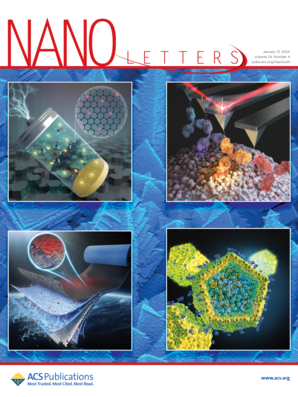Senescence-to-Pyroptosis Nanotuners: Navigating Tumor Inflammatory Microenvironment for Enhanced Immunotherapy
IF 9.6
1区 材料科学
Q1 CHEMISTRY, MULTIDISCIPLINARY
引用次数: 0
Abstract
Modulating cancer-related chronic inflammation (CCI) is essential to reverse the immunosuppressive tumor microenvironment (TME) for improved therapeutic outcomes. However, the complexity and dynamism of inflammatory processes within the TME pose formidable challenges. Here, we identify senescent tumor cells as a novel “nest”-like target and design a tailored nanotuner that transforms these cells from adversaries to allies in TME remodeling. Specifically, this nanotuner targets metabolic abnormalities and initiates cascading artificial reactions via chemiluminescence resonance energy transfer mechanisms, which trigger self-initiated and self-sustaining photodynamic processes for boosted 1O2, converting cellular senescence into pyroptosis. Such conversion fosters multifaceted immune activation, including blocking CCI networks, downregulating PD-L1, and enhancing dendritic cell maturation and T-cell recruitment in tumors. Assessments in two tumor models further demonstrate its durable antitumor effects against primary and distant solid tumors when combined with a PD-1 blockade. This work provides a paradigm shift for novel insights into tumor development and immunoregulatory tactics.

衰老到焦亡纳米调谐器:导航肿瘤炎症微环境增强免疫治疗
调节癌症相关的慢性炎症(CCI)对于逆转免疫抑制肿瘤微环境(TME)以改善治疗结果至关重要。然而,TME内炎症过程的复杂性和动态性构成了巨大的挑战。在这里,我们将衰老肿瘤细胞识别为一种新的“巢”样靶标,并设计了一种定制的纳米调谐器,将这些细胞从TME重塑中的对手转化为盟友。具体来说,这种纳米调谐器针对代谢异常,并通过化学发光共振能量转移机制启动级联人工反应,触发自我启动和自我维持的光动力过程,促进1O2,将细胞衰老转化为焦亡。这种转化促进了多方面的免疫激活,包括阻断CCI网络,下调PD-L1,增强肿瘤中的树突状细胞成熟和t细胞募集。两种肿瘤模型的评估进一步表明,当与PD-1阻断剂联合使用时,其对原发性和远处实体瘤的持久抗肿瘤作用。这项工作为肿瘤发展和免疫调节策略的新见解提供了范式转变。
本文章由计算机程序翻译,如有差异,请以英文原文为准。
求助全文
约1分钟内获得全文
求助全文
来源期刊

Nano Letters
工程技术-材料科学:综合
CiteScore
16.80
自引率
2.80%
发文量
1182
审稿时长
1.4 months
期刊介绍:
Nano Letters serves as a dynamic platform for promptly disseminating original results in fundamental, applied, and emerging research across all facets of nanoscience and nanotechnology. A pivotal criterion for inclusion within Nano Letters is the convergence of at least two different areas or disciplines, ensuring a rich interdisciplinary scope. The journal is dedicated to fostering exploration in diverse areas, including:
- Experimental and theoretical findings on physical, chemical, and biological phenomena at the nanoscale
- Synthesis, characterization, and processing of organic, inorganic, polymer, and hybrid nanomaterials through physical, chemical, and biological methodologies
- Modeling and simulation of synthetic, assembly, and interaction processes
- Realization of integrated nanostructures and nano-engineered devices exhibiting advanced performance
- Applications of nanoscale materials in living and environmental systems
Nano Letters is committed to advancing and showcasing groundbreaking research that intersects various domains, fostering innovation and collaboration in the ever-evolving field of nanoscience and nanotechnology.
 求助内容:
求助内容: 应助结果提醒方式:
应助结果提醒方式:


